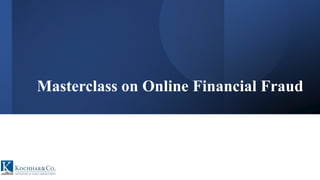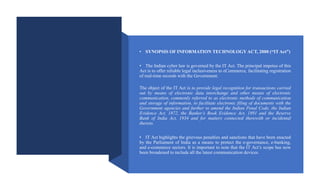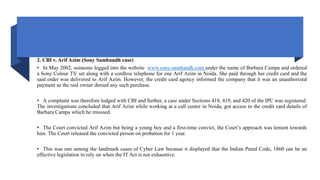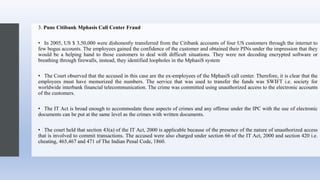This document provides an overview of online financial fraud, cyber laws in India, and how to file a cybercrime complaint. It discusses common types of online financial fraud like phishing and lottery scams. It also summarizes key aspects of cyber laws in India like the Information Technology Act and sections of the Indian Penal Code related to cybercrimes. Regarding filing complaints, it outlines steps to register complaints with local police or online through the National Cybercrime Reporting Portal and types of information and documents required.

















